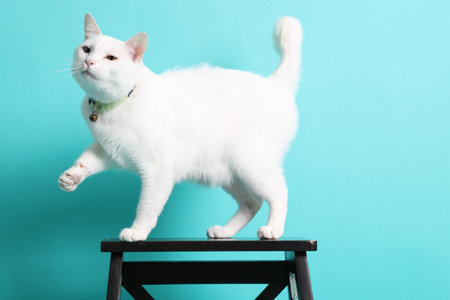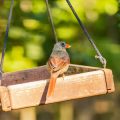Understanding Your Pet’s Unique Needs
When it comes to creating a balanced lifestyle for your small pet, understanding their unique needs is the first and most important step. Small pets like hamsters, guinea pigs, and rabbits are often grouped together, but each species—and even each individual—has its own requirements for nutrition, space, and mental stimulation. For example, while hamsters are generally solitary and need plenty of tunnels and wheels to explore, guinea pigs thrive in pairs or groups and require lots of hay and fresh veggies for optimal health. Rabbits, on the other hand, benefit from both social interaction and ample room to hop around safely.
It’s also crucial to consider your pet’s personality. Some hamsters love running for hours on an exercise wheel, while others might prefer burrowing or chewing toys. Guinea pigs may be shy at first but can become very social with regular gentle handling. Rabbits often enjoy interactive playtime outside their enclosure under supervision. By observing your pet’s behavior and preferences, you can tailor their environment and daily routine to support both their physical health and emotional well-being. Taking time to learn about your pet’s species-specific needs sets the foundation for a happy and balanced life together.
2. Nutritious Diets: What Really Counts
Building a balanced lifestyle for your small pet starts with their diet. Whether you have a rabbit, guinea pig, hamster, or another small furry friend, it’s vital to understand what makes up a healthy meal plan. Let’s break down the essentials: daily foods, treats, and the right portion sizes.
Daily Foods: The Foundation of Health
The majority of your small pet’s nutrition should come from high-quality staple foods. For most small pets in America, this means:
- Hay: Essential for rabbits and guinea pigs; Timothy hay is widely available in U.S. pet stores like Petco or PetSmart.
- Pellets: Choose species-specific pellets with no added sugars or artificial colors. Brands such as Oxbow and Kaytee offer reputable options.
- Fresh Produce: A mix of leafy greens and veggies keeps things interesting and nutritious.
Examples of Suitable Fresh Produce
| Pet Type | Safe Veggies & Fruits (found in U.S. stores) | How Often? |
|---|---|---|
| Rabbit | Romaine lettuce, parsley, cilantro, bell pepper, apple (no seeds) | Veggies daily; fruit 1-2x/week |
| Guinea Pig | Kale, green leaf lettuce, carrots, blueberries, orange slice | Veggies daily; fruit 1-2x/week |
| Hamster | Cucumber, broccoli, spinach, strawberry piece, banana slice | Tiny veggie/fruit pieces 2-3x/week |
Treats: Fun but Controlled
Treats are great for bonding and training but should never exceed 5% of your pet’s total diet. Avoid sugary or salty human snacks. Safe store-bought options in the U.S. include:
- Baked apple chips (no added sugar)
- Dried Timothy biscuits (Oxbow Simple Rewards)
- Pumpkin seed treats for hamsters (Vitakraft brand)
Portion Sizes Matter
Overfeeding—even with healthy foods—can cause obesity or digestive issues. Use these general guidelines as a starting point:
| Pet Type | Main Food Portion Size | Treat Portion Size |
|---|---|---|
| Rabbit/Guinea Pig | Unlimited hay; 1 cup mixed veggies per 2 lbs body weight; 1/8 cup pellets daily | A thumbnail-sized treat 1-2x/day |
| Hamster/Gerbil | 1 tablespoon pellet mix daily; small pinch fresh produce as above | A single seed or tiny biscuit piece/day |
A Practical Example: A Day in the Life of a Well-Fed Guinea Pig
Your guinea pig wakes up to fresh Timothy hay and a measured scoop of fortified pellets. In the afternoon, you serve up a salad of kale, red bell pepper, and a slice of orange. As an evening reward for coming when called, she gets an Oxbow baked treat—no more than once per day.
This approach ensures your pet gets what they need for energy and health while also keeping mealtimes engaging and enjoyable!

3. Exercise and Play: Making Movement Fun
Keeping your small pet active is essential for both their physical and mental health. A balanced lifestyle means more than just food and shelter—it’s about giving them the space and opportunities to move, explore, and play every day. Here are some practical ways to make daily activity part of your pet’s routine, while keeping things fun and engaging.
Setting Up Safe Play Areas
Designate a safe space for your pet to stretch their legs outside of their cage. Portable playpens are a popular choice among American pet owners because they’re easy to set up in living rooms or backyards. For example, many hamster owners use collapsible mesh pens that allow their pets to run around safely without getting lost under furniture. Guinea pig owners often create “floor time” zones with chew-proof barriers, ensuring pets have enough room to explore but can’t escape or get into trouble.
Tunnels and Hideouts: Encouraging Exploration
Tunnels are a big hit with small animals like rabbits, rats, and ferrets. You can buy specially-made tunnels at most U.S. pet stores or even DIY them from cardboard boxes and paper towel rolls. One rabbit owner in Texas shared how her bunny’s favorite activity was darting in and out of a series of connected cardboard tubes during supervised playtime—a simple setup that provided hours of exercise and entertainment.
Interactive Toys That Really Work
Interactive toys keep your pet mentally stimulated while they move. Puzzle feeders, which require pets to solve simple challenges for treats, are highly recommended by veterinarians across the U.S. For instance, a popular choice for hamsters is a spinning treat ball that dispenses seeds as they push it around. Many ferret owners swear by hanging climbing toys made of soft rope—these encourage jumping and climbing, which mimic their natural instincts.
The key is variety: rotate toys regularly to keep things fresh, and always supervise new activities until you’re sure they’re safe for your specific pet. By making movement enjoyable and accessible, you’ll help your small pet stay happy, healthy, and well-balanced every day.
4. Mental Stimulation: Keep Their Minds Active
Keeping your small pet’s mind engaged is just as important as meeting their physical needs. In the United States, many pet owners recognize that boredom can lead to negative behaviors like chewing furniture, over-grooming, or even depression in small pets such as rabbits, guinea pigs, hamsters, and rats. By incorporating mental stimulation into your pet’s daily routine, you can help ensure they stay happy and healthy.
Why Mental Stimulation Matters
Just like people, small pets need variety and challenges to stay mentally sharp. Without enough stimulation, pets may become bored and develop habits that are tough to break. Regular mental exercise keeps their brains active and can even improve their problem-solving skills and confidence.
Creative Activities for Engaged Pets
American pet owners use a mix of puzzle toys, foraging games, and safe household items to keep their pets entertained. Puzzle feeders make pets work for their treats, while simple cardboard tubes or paper bags provide hours of exploration. Foraging games—where you hide treats around the cage or play area—encourage natural instincts and curiosity.
Examples of Easy Enrichment Ideas
| Activity | How It Works | Common US Household Items Used |
|---|---|---|
| Puzzle Feeders | Hide pellets or veggies inside a feeder that requires manipulation to access food. | Kong toys, treat balls, DIY from egg cartons |
| Foraging Boxes | Fill a box with hay and sprinkle in some treats for digging fun. | Shoe boxes, tissue boxes, paper bags |
| DIY Mazes | Create tunnels and mazes to encourage exploration. | Cardboard tubes, cereal boxes, PVC pipes (cleaned) |
| Sensory Play | Add new textures or scents to stimulate curiosity. | Towels, crumpled paper, clean pinecones |
Everyday Solutions from American Pet Owners
Many US pet parents rotate toys weekly to keep things fresh. Some freeze veggies in ice cubes during summer for a cool puzzle. Others use safe kitchen scraps like broccoli stems or apple slices hidden under layers of hay. The key is observing your pet’s preferences and safely introducing new experiences. With creativity and common household items, anyone can boost their pet’s mental wellbeing and create a more balanced lifestyle at home.
5. Creating a Safe and Enriching Environment
Ensuring your small pet’s living space is both safe and stimulating is essential for their overall well-being. A clean, thoughtfully arranged environment supports physical health and encourages natural behaviors like burrowing, exploring, and nesting.
Step 1: Prioritize Cleanliness
Start by establishing a regular cleaning schedule. In the U.S., most experts recommend spot-cleaning your pet’s cage daily to remove soiled bedding and uneaten food. Perform a thorough clean—with pet-safe disinfectant—once a week. This prevents odor buildup, reduces stress, and protects your pet from harmful bacteria.
Step 2: Choose Safe Bedding Materials
Bedding is more than just something soft to walk on; it’s where your pet will sleep, dig, and sometimes even snack. Avoid cedar or pine shavings, as these can emit oils that irritate small animals’ respiratory systems. Instead, opt for paper-based bedding brands such as Carefresh or Kaytee Clean & Cozy, which are widely used in the U.S. These are absorbent, dust-free, and safe if ingested in small amounts.
Step 3: Add Hiding Spots and Tunnels
Small pets need secure places to hide and explore. American pet owners often use cardboard boxes, woven grass huts, or commercial plastic igloos as hiding spots. You can also provide tunnels made of paper towel rolls or specialized critter tubes. Rotating these features keeps your pet interested and encourages healthy activity.
Cage Arrangement Tips
- Place food and water away from bedding to prevent contamination.
- Add climbing platforms or ramps for exercise (especially for hamsters or rats).
- Avoid overcrowding the cage; leave open areas for movement.
Real-World Example
For instance, Emily from Ohio rearranges her guinea pig’s habitat every month—adding new chew toys, rotating hideouts, and refreshing bedding types. She noticed her pet became more active and curious after each change, demonstrating how enrichment boosts mental and physical health.
A safe and enriching environment doesn’t just make your small pet happier; it lays the foundation for a balanced lifestyle where they thrive every day.
6. Building a Routine: Consistency Is Key
Consistency plays a huge role in helping your small pet feel safe, secure, and happy. Just like people, pets thrive when they know what to expect from their day. Setting regular times for feeding, play, and cleaning not only lowers your pet’s stress but also makes it easier for you to keep up with their needs.
Why Routines Matter for Small Pets
Most small pets—such as hamsters, guinea pigs, rabbits, or birds—are creatures of habit. When their daily schedule is predictable, they are less likely to develop anxiety or behavioral issues. For example, if your rabbit knows that dinner and playtime happen after work every day, it will look forward to those moments and behave more calmly throughout the rest of the day.
Sample Daily Routine for Busy American Households
If you work a typical 9-to-5 job or juggle family commitments, here’s a simple routine that fits into most American schedules:
Morning (7:00–8:00 AM)
- Freshen water and refill food bowls
- Quick cage spot-cleaning
- Short play or cuddle session before heading out
Evening (6:00–8:00 PM)
- Main feeding time with fresh veggies or pellets
- Extended playtime outside the cage or in a safe playpen
- Social interaction—talking, gentle petting, or training games
Night (Before Bed)
- Final check on water and food supplies
- Quiet bonding time—a few minutes of calm attention helps pets settle down
Troubleshooting: Sticking to the Plan
If life gets hectic and you miss a routine task occasionally, don’t worry. The key is getting back on track as soon as possible. You can even set phone reminders or enlist family members to help share responsibilities. Over time, your pet will recognize these patterns and look forward to them—making your bond stronger and your home happier.
7. Recognizing Signs of Imbalance
Maintaining a balanced lifestyle for your small pet means staying alert to any signs that something might be off. Your pet can’t tell you directly when they’re stressed, bored, or not feeling well, so it’s crucial to know what behaviors or physical cues to watch out for. Here’s how American pet owners can spot trouble early and take meaningful action.
Common Signs Your Pet May Be Out of Balance
- Change in Appetite: Eating much more or less than usual.
- Lethargy: Unusual tiredness or lack of interest in play.
- Over-Grooming or Hair Loss: Excessive cleaning or bald spots.
- Aggression or Withdrawal: Hiding, biting, or sudden change in social behavior.
- Repetitive Behaviors: Pacing, circling, bar-biting, or other obsessive actions.
- Noisy Breathing or Sneezing: Signs of possible respiratory distress.
- Unusual Droppings: Diarrhea, very hard stools, or changes in frequency/appearance.
What To Do If You Notice These Signs
Step 1: Observe Closely
Keep a daily log of your pet’s behavior and symptoms. This helps you track patterns and provides valuable info if you need to consult a vet.
Step 2: Check Their Environment
Make sure their cage is clean, the temperature is comfortable, and they have access to fresh water and suitable food. Sometimes small changes—like a dirty cage or loud noises—can cause stress.
Step 3: Enrich Their Routine
If boredom seems likely (e.g., repetitive behaviors), rotate toys, add new hiding spots, or introduce foraging games to keep things interesting. Consider safe options like cardboard tunnels or puzzle feeders commonly available at U.S. pet stores.
Step 4: Socialize (When Appropriate)
If your species enjoys companionship (such as guinea pigs), make sure they have social interaction with you and possibly another pet. For solitary animals like hamsters, gentle handling and talk time can still help reduce loneliness.
Step 5: Consult a Professional
If symptoms persist for more than a day or worsen—especially signs of illness like breathing problems or appetite loss—contact an exotic animal vet right away. Many American veterinary clinics offer same-day appointments for small pets; don’t wait if you’re concerned.
Your Role as a Pet Parent
The best way to create a balanced lifestyle is to be proactive and observant. By learning what’s normal for your small pet and taking quick action when something seems off, you’ll help them stay happy, healthy, and thriving as part of your American family.


